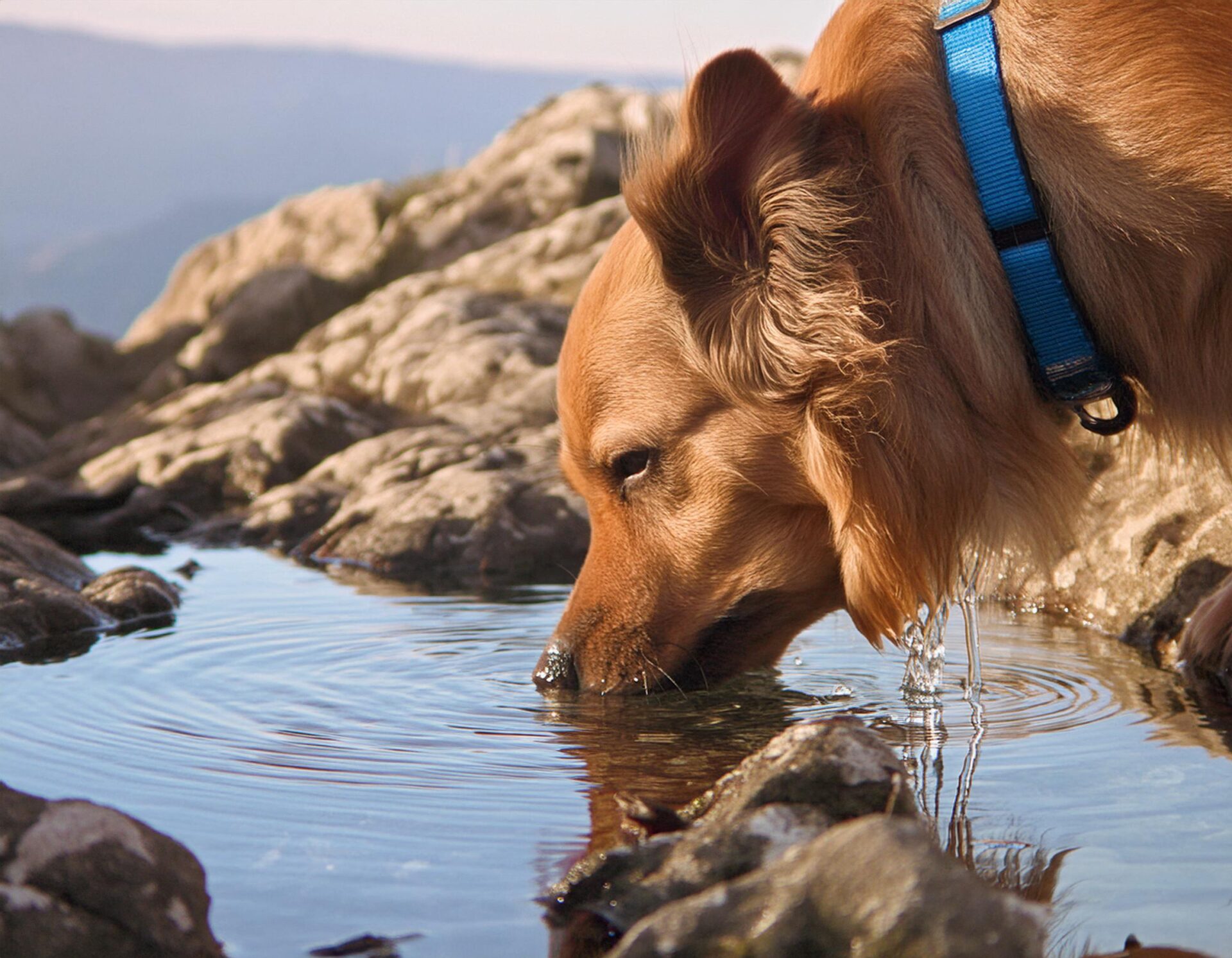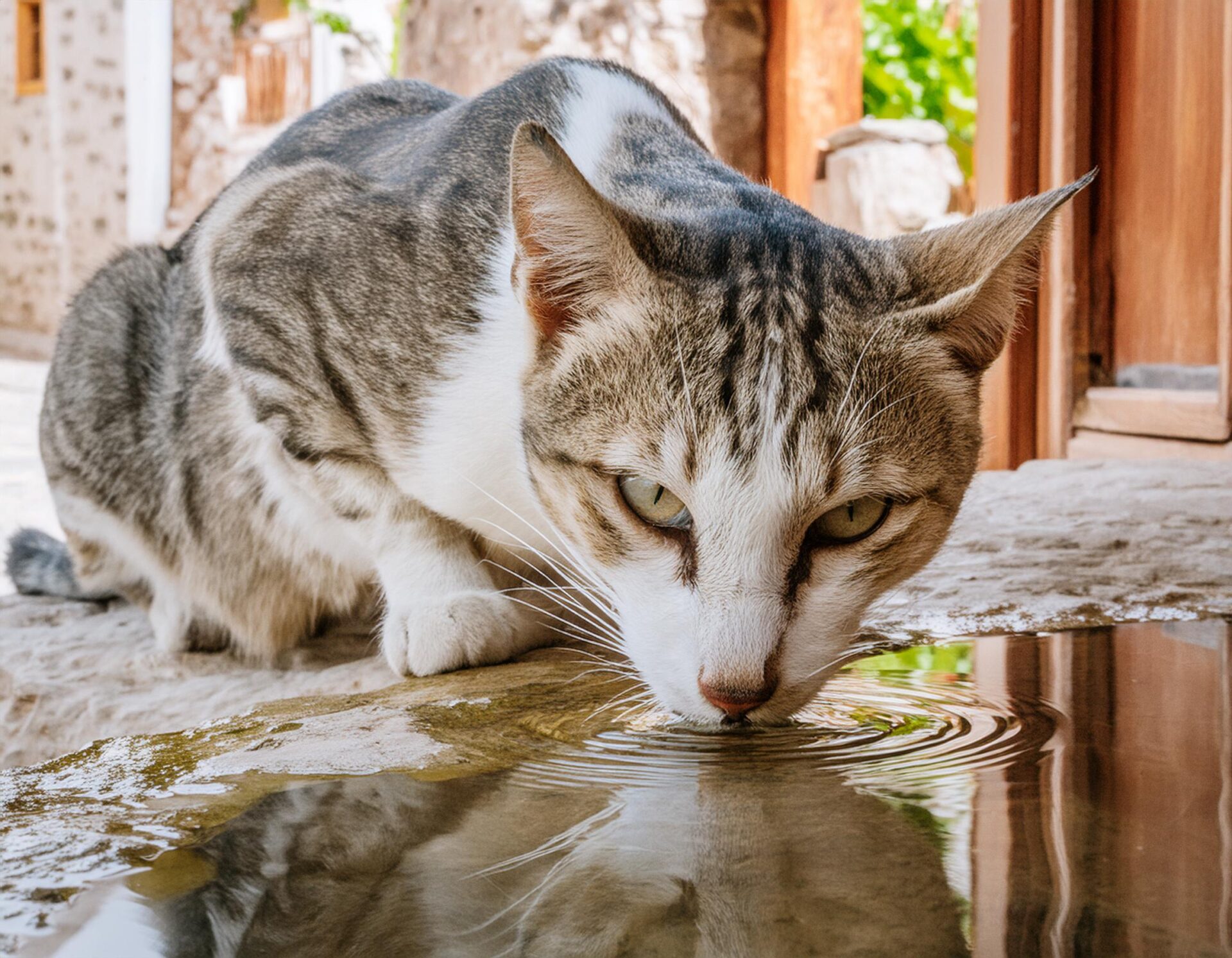Hydrating our pets is just as important as keeping ourselves hydrated, especially as the warmer months approach. We all know that a good supply of clean, fresh water is crucial for our own health, but it’s easy to overlook just how essential it is for our furry friends as well. Smart devices for pets, like automated water fountains, have made it easier than ever to ensure our companions have access to water at all times, encouraging them to drink more and stay hydrated.

With the variety of pet hydration solutions available, we can now monitor and adjust our pet’s water intake conveniently. From gravity-based water dispensers that refill as your pet drinks to water fountains with filters that keep the water fresh and enticing, these smart gadgets can help you provide the best hydration care for your pets. Investing in these technologies not only shows our love for our pets but also contributes to their health and longevity.
Key Takeaways
- Hydration is crucial for pet health, just like it is for humans.
- Smart devices for pets ensure consistent access to clean water.
- Advanced hydration solutions offer convenience and monitoring capabilities.
Understanding Pet Hydration
We all know how essential water is to our lives, but let’s not forget that it’s just as crucial for our furry friends. Whether you’re a seasoned pet owner or a new adopter of a playful puppy using the latest smart water bowl, understanding pet hydration is a vital part of pet care. Proper hydration in pets aids in everything from nutrient absorption to temperature regulation, and as responsible pet parents, we want to ensure we’re doing everything we can to keep our pets healthy and happy.
Importance of Water for Pets
Water is the key to a healthy life for all living creatures, including our pets. It’s involved in every bodily function, from digestion to circulation. For our pets, especially those who are active or use smart devices, like a GPS tracker, maintaining hydration is key as their activity increases their need for water. A pets’ body is made up of nearly 60-70% water, so it’s easy to see why staying hydrated is non-negotiable.
- Digestive health: Water helps break down food and absorb nutrients.
- Detoxification: It flushes out toxins from the body.
- Temperature control: Through panting and sweating, water helps regulate body temperature.
Signs of Hydration and Dehydration
Being aware of your pet’s hydration status can sometimes be challenging, but with smart technology, we can keep an eye on their water intake much more efficiently. Signs that your pet is well-hydrated include:
- Moist gums
- Elastic skin
- Clear urine
Conversely, signs of dehydration might include:
- Dry mouth
- Lethargy
- Sunken eyes
If you notice any of these signs, it’s crucial to take action immediately. Smart devices like hydration monitors can be a lifesaver, giving us real-time updates and alerts on our pet’s hydration levels. Keep your pets’ water bowls filled and encourage regular drinking to prevent dehydration.
Assessing Your Pet’s Hydration Needs
Understanding your pet’s hydration needs is essential for their health and wellbeing. We want to grab your attention with the importance of monitoring their water intake, especially in the context of using smart devices. It’s fascinating how technology can help us keep our furry friends hydrated. By assessing hydration needs with smart devices, we increase our interest and desire to act proactively for our pets’ health.
Factors Influencing Hydration
Every pet is an individual with unique hydration requirements. It’s crucial to consider:
- Age: Puppies and kittens, just like seniors, may require more attention to their water consumption.
- Size: Larger pets generally need more water than smaller ones.
- Activity Level: Active pets need more water to stay hydrated.
- Health Status: Pets with certain conditions may have increased water needs.
- Climate and Environment: Hot weather or heated indoor environments can increase water needs.
Utilizing smart devices, such as smart water fountains or water intake trackers, can help us understand these factors better. These tools can alert us to changes in our pet’s hydration habits, prompting further investigation if necessary.
Daily Water Intake Guidelines
The baseline for a pet’s water consumption typically revolves around their weight. It’s suggested that dogs need about one ounce of water per pound of body weight per day. Cats usually need between 3.5–4.5 ounces of water per 5 pounds of body weight per day. However, this is a guideline and the actual amount can vary.
Here’s a brief breakdown:
- Dogs: 1 ounce/pound/day
- Cats: 0.7–0.9 ounces/pound/day
By integrating smart hydration sensors, we can track our pet’s water intake and compare it to these guidelines. Smart water bowls can measure the amount of water consumed and even schedule reminders for refills or check-ins if intake is lower than usual, ensuring our pets are getting the hydration they need.
Practical Hydration Tips

When it comes to keeping our furry friends healthy and happy, proper hydration is as essential as a balanced diet. We all want to ensure our pets have enough to drink, but sometimes they need a little extra encouragement. Let’s ensure our smart devices for pets are put to good use by incorporating them into our hydration strategy.
Providing Fresh Water
To start, always have fresh water available for our pets. Consider installing a smart water fountain that filters and circulates the water to keep it clean and appealing. This can be linked to our phones to alert us when it’s time to refill or if there’s a change in our pet’s drinking habits. For pets that prefer a still water source, smart water bowls that automatically refill when the water level gets low are perfect for keeping a constant supply of fresh water.
- Tip: Use a stainless steel or ceramic water bowl for ease of cleaning and to reduce bacteria.
- Reminder: Regularly clean the bowls or fountains to maintain water freshness.
Encouraging Pets to Drink
Sometimes our pets might need a nudge to drink more. A smart pet hydration device can track their water intake and alert us if they’re not drinking enough. To encourage them, we can add flavors to their water with vet-approved broth or infusions specifically designed for pets.
- Flavor Add-ins: A splash of chicken or beef broth can be tempting for picky drinkers.
- Placement: Multiple water stations around the house will remind pets to hydrate. Ensure they are away from food and litter areas.
By leveraging smart devices, we can monitor and improve our pets’ drinking habits, contributing to their overall health and well-being.
Hydration for Different Types of Pets
We all want to ensure our furry and feathered friends are healthy, so it’s crucial to understand their hydration needs. Staying hydrated isn’t just about drinking water; it’s about how we integrate smart technology to monitor and encourage our pets to drink regularly.
Hydration for Dogs
For our canine companions, hydration is key for good health. We recommend smart water bowls that track how much water your dog drinks. These smart devices can alert us when it’s time to refill and even provide insights into your dog’s drinking patterns.
Hydration for Cats
Cats are known for being finicky drinkers. A smart water fountain can entice our feline friends to stay hydrated by providing a constant stream of fresh, filtered water. This appeals to their preference for moving water and keeps them coming back for more.
Hydration for Small Mammals
Small mammals like rabbits and guinea pigs need access to fresh water at all times. We’ve seen fantastic results with smart water bottles that can attach to the cage and alert us via an app when water levels are low, ensuring our tiny pals are never thirsty.
Hydration for Reptiles
Reptiles require a different approach to hydration. Some may need a drip system that simulates their natural environment. Smart misters or foggers can maintain the right humidity levels, which is essential for the hydration and health of our reptilian pets.
Hydration for Birds
Birds need clean water for both drinking and bathing. With smart water dispensers, we can make sure our birds’ water is always fresh. Units with built-in filters and UV sterilization promise a clean drink every time, which is vital for our birds’ well-being.
Handling Dehydration in Pets
We all love our furry friends and want to keep them happy and healthy, which is why understanding and managing their hydration is critical. Dehydration can occur quickly and can be dangerous if not addressed. Let’s take a look at how to spot dehydration, what you can do at home, and when it’s time to call the vet.
Identifying Dehydration
To keep our pets in the best shape, it’s vital to recognize the signs of dehydration. These symptoms include loss of skin elasticity, dry gums, and lethargy. A simple way to test this at home is the Skin Elasticity Test: gently lift the skin on the back of your pet’s neck; hydrated skin should snap back promptly.
Immediate Steps and Home Remedies
When you notice signs of dehydration:
- Offer fresh water: Make sure your pet has access to clean drinking water. Smart water fountains can encourage them to drink more by providing a fresh, appealing water source.
- Wet food: Incorporating wet food into their diet can help increase water intake.
- Monitor and adjust: Use smart devices to track your pet’s water consumption and adjust their environment and routine to support better hydration habits.
When to See a Veterinarian
It’s time to consult a professional when:
- Home remedies don’t improve your pet’s condition.
- If dehydration is accompanied by vomiting or diarrhea.
- Your pet shows extreme lethargy or any concerning changes in behavior.
Our connected devices can only do so much; persistent signs of dehydration mean it’s time for a vet’s expertise. Remember, timely intervention can prevent more severe health issues.
Frequently Asked Questions
We know you’re keen to keep your furry friends happy and hydrated, so we’ve gathered some common inquiries about their water needs. Remember, smart devices like pet water fountains tailored for dogs can make monitoring and managing their hydration a breeze.
What amount of water is typically recommended for a dog’s daily intake?
For dogs, a general guideline suggests they need about one ounce of water per pound of body weight each day. However, factors like activity level, age, and health can alter this need.
How do you calculate water intake for dogs based on their weight?
To ensure your dog’s hydration is on point, simply multiply their weight in pounds by one ounce. For instance, a 20-pound pup would need 20 ounces of water per day. We can find smart water bowls to help track their intake.
Is it advisable to restrict a dog’s access to water during the night?
Generally, limiting a dog’s access to water late at night can help prevent accidents. Yet, make sure they’re fully hydrated before bedtime, and assess their needs individually.
What are some signs that a dog may not be drinking enough water?
Key signs of dehydration include lethargy, dry gums, and a decrease in urine output. If we notice our dog’s water bowl isn’t emptying as usual, we might consult veterinary resources to check their hydration status.
What are the most hydrating foods you can give to a dog?
Foods high in water content, such as cucumbers or watermelon, can contribute to hydration. Always offer fresh water alongside, especially when feeding hydrating foods.
What are some effective methods to ensure your dog stays hydrated throughout the day?
Interactive water fountains and smart water dispensers keep water fresh and entice dogs to drink more. We can also use a mobile app to remind us to refill their bowl regularly throughout the day.
